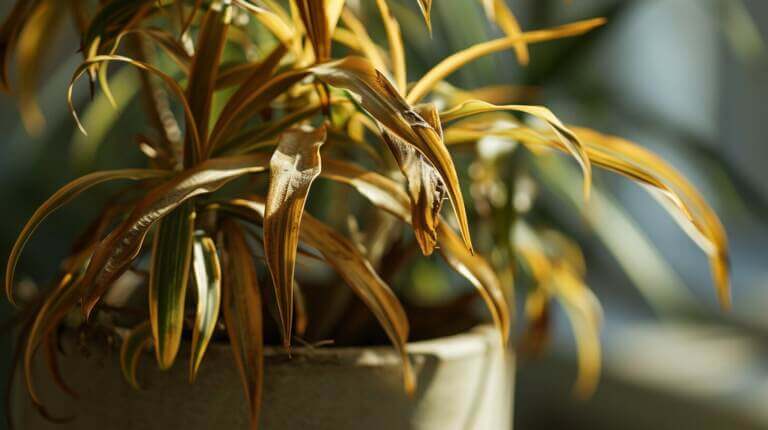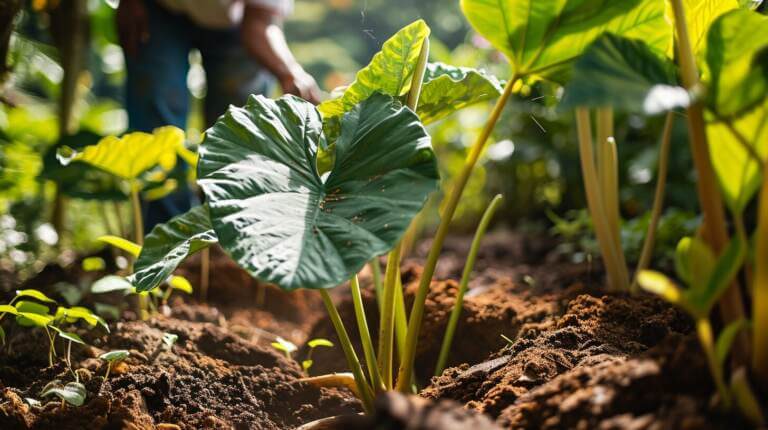Why Is My ZZ Plant Drooping? How to Revive and Care for a Droopy Plant
Is your ZZ plant looking a little down? Don’t worry, you’re not alone. Many plant owners face the challenge of a drooping ZZ plant at some point.
But fear not, because in this article, we will explore the common causes behind this phenomenon and provide you with practical tips on how to revive and care for your droopy plant.
Whether it’s overwatering, lack of sunlight, or root rot, we’ve got you covered with expert advice and guidance.
Get ready to give your ZZ plant the love and attention it deserves.
Key Takeaways
- Overwatering can cause ZZ plants to droop, so it’s important to let the soil dry out between waterings.
- Inadequate lighting can lead to drooping leaves, so make sure to provide bright, indirect light for the plant.
- Pests and diseases can also cause ZZ plants to droop, so regular inspection is necessary to catch any issues early.
- To revive and care for a droopy ZZ plant, assess the watering routine, use well-draining soil, fertilize regularly, and consider propagating the plant for new growth.
Common Causes of ZZ Plant Drooping
The common causes of ZZ plant drooping often stem from issues such as overwatering, nutrient deficiencies, or inadequate lighting. Underwatering issues can lead to drooping leaves as the plant becomes dehydrated. ZZ plants are known for their ability to tolerate low water conditions, but they still require regular watering. It is important to strike a balance and avoid both overwatering and underwatering.
Another common cause of ZZ plant drooping is nutrient deficiencies. Like any other plant, ZZ plants need a balanced diet of nutrients to thrive. Lack of essential nutrients can result in weak and droopy leaves. It is recommended to use a well-balanced fertilizer specifically formulated for houseplants to provide the necessary nutrients to the ZZ plant.
Additionally, inadequate lighting can cause ZZ plant drooping. ZZ plants prefer bright, indirect light, but they can tolerate low light conditions as well. However, if the plant is placed in an area with insufficient light, it may start to droop and become weak. To prevent this, ensure that the ZZ plant is placed in a location that receives adequate light, but avoid direct sunlight.
Lastly, ZZ plants can also be susceptible to pests and diseases, which can cause drooping leaves. Common pests that can affect ZZ plants include spider mites, mealybugs, and scale insects. Regularly inspect the plant for any signs of pests or diseases and take appropriate measures to control and prevent infestations.
Signs of Overwatering and How to Fix It
Overwatering can lead to significant damage to plants, but with proper care and attention, it is possible to fix the signs of overwatering and restore the health of the plant. Here are three important steps to prevent overwatering and properly care for a ZZ plant:
- Understand the watering needs: ZZ plants are native to arid regions, so they are adapted to survive in dry conditions. It is crucial to let the soil dry out between waterings. Stick your finger about an inch into the soil, and if it feels dry, it’s time to water. Avoid watering on a fixed schedule and instead rely on the plant’s needs.
- Use well-draining soil and pots: ZZ plants prefer well-draining soil to prevent water from pooling around the roots. Choose a pot with drainage holes and use a potting mix that allows excess water to flow out easily. This will prevent waterlogged soil, which can lead to root rot.
- Watering technique: When watering, thoroughly saturate the soil until water drains out from the bottom of the pot. Ensure that excess water is discarded and not left sitting in a saucer or tray. This will help prevent the roots from sitting in water and promote healthy growth.
Lack of Sunlight: A Possible Culprit
When caring for a droopy ZZ plant, it is essential to consider the possible culprit of lack of sunlight and ensure that the plant is receiving adequate light for optimal growth. Sunlight deficiency can cause a ZZ plant to droop and become unhealthy. ZZ plants are native to the understory of forests in Africa, where they are accustomed to receiving filtered light. However, they still require bright, indirect light to thrive indoors.
To provide the proper ZZ plant lighting, place your plant in a location that receives bright, indirect sunlight for at least six to eight hours a day. Avoid exposing it to direct sunlight, as this can scorch the leaves. If you don’t have a suitable spot with enough natural light, you can supplement with artificial light. LED grow lights are a great option, as they provide the necessary spectrum of light for plant growth.
Dealing With Root Rot: Diagnosis and Treatment
Root rot can be a serious problem for plants, but with proper diagnosis and treatment, it can be effectively managed. Here are three important points to consider when dealing with root rot:
- Early detection is key: It is crucial to monitor your plants regularly for any signs of root rot. Look for wilting, yellowing leaves, stunted growth, and a foul odor coming from the soil. If you suspect root rot, gently remove the plant from its pot to inspect the roots. Healthy roots should be firm and white, while rotted roots will be mushy and dark.
- Importance of well-draining soil: One of the main causes of root rot is excessive moisture around the roots. To prevent this, ensure that your plants are potted in well-draining soil that allows excess water to flow out easily. Avoid using heavy, compacted soils that can retain water for longer periods.
- Proper watering practices: Overwatering is a common mistake that can lead to root rot. It is important to water your plants thoroughly but allow the top inch of soil to dry out before watering again. Be mindful of the specific water requirements of each plant and adjust your watering schedule accordingly.
Tips for Reviving and Caring for a Droopy ZZ Plant
Although improper care and environmental factors can contribute to a droopy ZZ plant, implementing these tips can help revive and care for it effectively. ZZ plants are known for their ability to thrive in low-light conditions, making them a popular choice for indoor plant enthusiasts. However, even the most resilient plants can experience drooping due to various reasons.
One of the first steps in reviving a droopy ZZ plant is to assess its watering routine. Overwatering can lead to root rot, causing the plant to wilt and droop. Ensure that the plant is placed in a well-draining pot and allow the soil to dry out between waterings. On the other hand, underwatering can also cause drooping, so make sure the plant is receiving adequate moisture.
Additionally, proper fertilization is crucial for the health of a ZZ plant. The best fertilizers for ZZ plants are those specifically formulated for houseplants, such as a balanced liquid fertilizer. Apply the fertilizer according to the instructions on the packaging, usually once a month during the growing season.
Furthermore, propagating a ZZ plant can help revive a droopy plant and promote new growth. Propagation can be done by dividing the rhizomes or by taking leaf cuttings. Both methods require proper care and attention to ensure successful propagation.
Frequently Asked Questions
How Can I Prevent My ZZ Plant from Drooping in the First Place?
To prevent your ZZ plant from drooping, proper care is crucial. Follow this zz plant care guide to maintain a healthy plant. First, ensure adequate watering by allowing the soil to dry out between waterings. Place the plant in bright, indirect light, avoiding direct sunlight. Maintain a consistent temperature, ideally between 65-75°F. Lastly, avoid overfertilizing and repotting too often, as ZZ plants prefer being root bound.
How Can I Prevent My ZZ Plant from Drooping in the First Place?
To prevent your ZZ plant from drooping, proper care is crucial. Follow this zz plant care guide to maintain a healthy plant. First, ensure adequate watering by allowing the soil to dry out between waterings. Place the plant in bright, indirect light, avoiding direct sunlight. Maintain a consistent temperature, ideally between 65-75°F. Lastly, avoid overfertilizing and repotting too often, as ZZ plants prefer being root bound.
Can I Use Tap Water to Water My ZZ Plant?
When it comes to watering your ZZ plant, using tap water can be a suitable option. However, it’s important to consider the quality of your tap water.
Tap water often contains chemicals like chlorine and fluoride, which can be harmful to plants in large quantities. If you’re concerned about the effects of tap water on your ZZ plant, you can consider using filtered or distilled water as alternatives.
These options remove any potential contaminants and provide a healthier watering solution for your plant.
What could be the causes of a drooping ZZ plant?
The common reason for a ZZ plant to start drooping is overwatering. When you water the plant too much, the roots may become waterlogged and the stems and leaves can turn yellow and start drooping.
How does repotting affect my ZZ plant?
If you notice your ZZ plant is drooping, it might be time to repot your ZZ plant. A larger pot allows the roots more room to grow and can prevent waterlogging.
How often should I water my ZZ plant?
ZZ plants don’t require a lot of water. It’s best to water the plant thoroughly and then allow the soil to dry out completely before watering again.
Why are my ZZ plant stems drooping?
Overwatering is a common cause of drooping stems in ZZ plants. If the plant gets too much water, the stems can become waterlogged and start to droop.
How can I prevent my ZZ plant from drooping?
To keep your ZZ plant healthy and prevent drooping, make sure it’s in a well-draining pot, don’t overwater it, and give the plant plenty of indirect light.
Can fertilizer cause my ZZ plant to droop?
Yes, using too much fertilizer can damage the plant and cause the plant to droop. It’s best to fertilize sparingly and only during the growing season.
Why are my ZZ plant leaves turning yellow?
Overwatering is a common cause of yellow leaves in ZZ plants. If you notice yellow leaves, you may need to let the soil dry out before watering again.
What care do ZZ plants require?
ZZ plants require indirect light, well-draining soil, and moderate watering. Overwatering can cause parts of the plant like leaves and stems to turn yellow and start drooping.
How does repotting help a droopy ZZ plant?
If your ZZ plant is drooping, repotting the plant can help. A new pot with fresh soil can improve drainage and give the roots more room to grow.
Can I still save my droopy ZZ plant?
Yes, even if your ZZ plant is drooping, it’s possible to revive it. Adjusting your care routine – such as watering less frequently or moving the plant to a location with better light can often help the plant recover.







